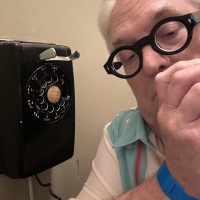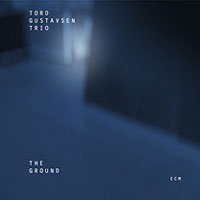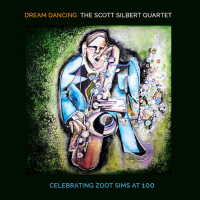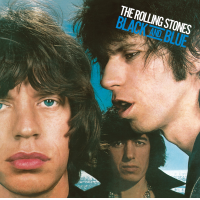Home » Jazz Articles » Bailey's Bundles » The Beethoven Symphony Series 1: The Nine Symphonies
The Beethoven Symphony Series 1: The Nine Symphonies
Introduction
What on earth does Beethoven have to do with Jazz?
The Complete Beethoven Symphonies in SACD
Kurt Masur, The Gewandhausorchester Leipzig, and Beethoven
Symphonies Nos. 1 & 2
Symphony No. 3
Symphonies Nos. 4 & 8
Symphony No. 5
Symphony No. 6
Symphony No. 7
Symphony No. 9
Finale
Introduction
I am inaugurating a new series as part of my column "Bailey's Bundles," focusing on Ludwig van Beethoven's Nine Symphonies. This inauguration is in response to the first American Beethoven Cycle in decades recently undertaken by Maestro Osmo Vanska and the fabled, Minnesota Orchestra, (Beethoven Symphonies Nos. 4 & 5, BIS-SACD-1416) and Kurt Masur's Gewandhausorchestra Leipzig 1970s cycle recently released in SACD surround sound (and the subject of the current article).
Before following maestro Vanska and orchestra through the cycle, I want to focus on one complete cycle as both an introduction to the composer and his symphonic corpus. As this series progresses, we will consider each new release by Vanska, comparing them with notable interpretations already available. Before all is said and done, we will also consider other notable completed cycles and the aspects of the composer's creative genius, as well as, the different performance practices affecting how Beethoven sounds today and how he sounded to his contemporaries.
This ongoing series joins my previous surveys, The Best Live Rock Recordings (1969-79) (Previously, The Ten Best Live Rock Recordings), The Ten Best Live Rock Recordings: The Best of the Rest, Best Live Jazz Recordings (1953-65) (Previously, The Ten Best Live Jazz Recordings), and Best Live Jazz Recordings: The Best of the Rest.
What on earth does Beethoven have to do with Jazz?
 Any jazz fan has the right to ask this question. While the question is certainly not silly (none are), it is naïve. The answer is simple. Music is Music, and Beethoven's music represents a pinnacle, if not the pinnacle of Western Musical Thought. Eurocentric as it may be, no other "classical composer" has more difinitively branded his or her musical philosophy into mankind's collective unconscious as has Beethoven. He is the cultural equivalent of St. Augustine in religion and philosophy, Newton in science, and Shakespeare in literature. Like poet and politician George Gordon, Lord Byron, Beethoven, with great regularity, redefined the norms of his art while in the same creation taking the time, care and thoughtfulness of critic and poet T.S. Eliot in that redefinition.
Any jazz fan has the right to ask this question. While the question is certainly not silly (none are), it is naïve. The answer is simple. Music is Music, and Beethoven's music represents a pinnacle, if not the pinnacle of Western Musical Thought. Eurocentric as it may be, no other "classical composer" has more difinitively branded his or her musical philosophy into mankind's collective unconscious as has Beethoven. He is the cultural equivalent of St. Augustine in religion and philosophy, Newton in science, and Shakespeare in literature. Like poet and politician George Gordon, Lord Byron, Beethoven, with great regularity, redefined the norms of his art while in the same creation taking the time, care and thoughtfulness of critic and poet T.S. Eliot in that redefinition.
The only possible American composer to be mentioned in the same breath as Beethoven is Edward Kennedy Ellington, another artist whose genius density was always at critical mass and whose creative momentum led to melodies and harmonies that have since become part of who We collectively are. Both men wrote for large and small orchestras, solo instruments, and the voice. Both men wrote enduring sacred and program music. Both men respectfully interpreted the music of their peers and those that came before them. Both men never wavered in the belief of their own genius.
It is incumbent upon us as informed music listeners to understand where we came from musically and, as a result, to fully appreciate this grace called Music provided us. Additionally, Beethoven was reputed to be a master improviser, a talent he shared with all of jazz. His improvisatory spirit is evident in his symphonies in both his theme development and recapitulation. I am not purporting that Beethoven is the be-all and end-all in music. What I am saying is Beethoven holds a greater place in music history than many other artists and that his name, when spoken or heard, is never misunderstood for anything other than greatness and careful, thoughtful creativity.
The Complete Beethoven Symphonies in SACD
As aural technological development reaches light speed, hurling toward audio DVD, the ship slowed down long enough to produce several super audio compact disc (SACD) Beethoven Symphony Cycles with more surely to come. A recent Google search using the key words "Complete, Beethoven, Symphonies, SACD" yielded three sets:
Berliner Philharmoniker, Herbert von Karajan, Deutsche Grammophon, released November 25, 2003.
Hague Residentie Orchestra, Jaap Van Zweden, Philips, released October 12, 2004.
Gewandhausorchester Leipzig, Kurt Masur, PentaTone, released December 14, 2004.
The latter of these sets is notable for originally having been mastered from Philips Records discreet quadraphonic recordings from the early 1970s. While quadraphonic technology was ahead of its time and had great promise, it remained crippled because of cost and availability. Not so today. The surround sound technology developed for in-home television has provided a grand platform for recorded music, producing the same stunning effects heard from movie soundtracks in theaters.
Kurt Masur, The Gewandhausorchester Leipzig, and Beethoven
 With this Masur / Gewandhausorchester Leipzig recording, PentaTone has preserved the integrity of the original quadraphonic recordings by employing four of the five available channels for this reissue. Sonically, little is lost in this decision. It offers a historic and unadulterated view of what was intended with quadraphonic fidelity 30 years ago. The sound and separation are durable and informative. Beethoven in surround sound reveals the luster and polish the composer intended when carefully composing these symphonies. Beethoven was known as a slow worker, drafting and redrafting his compositions, until they all bore that unmistakable Beethovenian spirit. Four channels reveal the intellectual dimensions of his efforts in living color.
With this Masur / Gewandhausorchester Leipzig recording, PentaTone has preserved the integrity of the original quadraphonic recordings by employing four of the five available channels for this reissue. Sonically, little is lost in this decision. It offers a historic and unadulterated view of what was intended with quadraphonic fidelity 30 years ago. The sound and separation are durable and informative. Beethoven in surround sound reveals the luster and polish the composer intended when carefully composing these symphonies. Beethoven was known as a slow worker, drafting and redrafting his compositions, until they all bore that unmistakable Beethovenian spirit. Four channels reveal the intellectual dimensions of his efforts in living color.
Masur's Gewandhausorchester Leipzig Beethoven Cycle offers an excellent vehicle to introduce the entire cycle to what may be an otherwise uninitiated listenership. These recordings were made before Masur replaced Zubin Metha (who followed the singular Leonard Bernstein, another great Beethovenian) as principle conductor of the New York Philharmonic. Der Gewandhausorchester Leipzig has a storied history sporting a list of conductors that includes Felix Mendelssohn, Wilhelm Furtwangler, and Bruno Walter. This fine German orchestra has lived in the shadow of the mighty Berliner Philharmoniker, but can stand toe-to-toe with her any day. The history surrounding the compositions will be provided along with critique and analysis of the performance.
Symphonies Nos. 1 & 2
Symphony No. 1 in C, Op. 21
Composed: [1795-6, 1797] 1799-1800
First public performance: April 2, 1800, Vienna.
Symphony No. 2 in D, Op. 36
Composed: 1800-02
First public performance: April 5, 1803, Vienna
Beethoven's first two symphonies are often considered his Classical symphonies because they owe more to the influence of Haydn and Mozart than the subsequent symphonies. They are certainly Classical in construct and development, possessing four movements and the sonata form. While having all of the fingers and toes of their Haydn and Mozart cousins, Beethoven's first two symphonies do begin to push the symphonic envelope harmonically and in sheer length. Beethoven composed these symphonies between 1799 and 1802. The composer's famous deafness manifested as a buzzing sound in his ears during this period, culminating in his famous "Heiligenstadt Testament," where the composer describes his despair at his worsening deafness to his brothers. This letter was dated October 2, 1802, during the period Beethoven was writing one of his sunniest symphonies, the Op. 36 in D.
Masur's readings of the first two symphonies are robust and seamless. His tempi are Beethoven (as opposed to Wagnerian) and are devoid of sluggishness or unevenness. The Gewandhausorchester Leipzig provides an expansive sound that is steeled under Masur's baton. There is little or no Romantic "fuzziness" surrounding themes. The performances are taunt and disciplined without being dry or boring. The tympani boom like a heartbeat and the reeds (considered to reveal Beethoven's thinking) are sharply and precisely captured. The strings can be considered nothing less than perfect, silken in texture, iron in will. Make no mistake, Masur's vision of these two symphonies are not period performances like those of Hogwood, Gardiner, or Norrington. Masur tones down the Romantic excess of the past and produces performances more in line with Harnoncourt's Chamber Orchestra of Europe cycle of the early '90s. Of the many modern-instrument performances, these may be the finest.
Symphony No. 3
Symphony No. 3 in E-flat, Op. 55 'Eroica'
Composed: 1803
First public performance: April 7, 1805, Vienna
It would be difficult to overstate the importance of Beethoven's Symphony in E-flat, Op. 55., Eroica. The symphony's stormy history begins with the suggestion by French ambassador to Austria, General Bernadotte, that Beethoven should "honour the greatest hero of the age in a musical composition." The hero in question was Napoleon Bonaparte. Beethoven was all about the concept of "the Brotherhood of Man," and as such, admired Bonaparte for restoring political order out of the French revolution. However when Napoleon crowned himself Emperor, Beethoven lost his mind and destroyed the title page of the symphony. Beethoven was in no mood for nonsense.
Nor was he in any mood for stale methods and traditions. The composer's third symphony laid waste to the previous conventional wisdom of the symphonic sonata form. Following the symphony's premiere Allgemeine Musikalische Zeitung wrote, "This long, most difficult composition is an extremely drawn out, bold, and wild fantasy. Very often, though, the work seems to lose itself in musical anarchy" with "too many garish and bizarre elements." The symphonies of Haydn and Mozart tended to be well-behaved affairs, short in duration (most less than 20-30 minutes) and ardently following the accepted allegro sonata form (four movements: fast, slow, scherzo (minuet), finale (fast with a coda)). Eroica changed all of that. The Masur duration considered here is greater than 45 minutes. Beethoven made the second movement a funeral march, unheard of at the time. The finale is a theme and variations developed from his ballet Die Gestopfe des Prometheus.
Eroica was composed during the same period as the composer's "Heiligenstadt Testament." Beethoven dug his heels in the dirt and forged forward artistically in spite of his failing hearing. It is at this point the listener begins to hear what Beethoven is made of.
Maestro Masur picks up right where he left off with the inaugural two symphonies. He consolidates the strings into a sleek fighting machine, containing their figures very precisely. The opening two E-flat chords sound almost too far apart, indicating a sluggish tempo. That bit of tension is released with a perfectly paced first movement, full of majesty. The Funeral March is deliberate and reserved without being sober. Masur captures Beethoven's unquenchable spirit. The relatively short Scherzo briskly ushers the listener to the symphony's staggering Finale, where Masur unleashes the considerable power of the Gewandhausorchester in demonstrating the advanced refinement of "The Beethoven Sound" the composer so painstakingly tried to achieve. The reeds, particularly the oboes, are well defined and sonically even with the strings.
Symphonies Nos. 4 & 8
Symphony No. 4 in B-flat, Op. 60
Composed: 1806
First performance: March 1807, Vienna (privately for Prince Franz von Lobkowitz)
Symphony No. 8 in F major, Op. 93
Composed: 1812
First public performance: February 27, 1814, Vienna
Beethoven Symphonies Four and Eight are often lumped together in discussion because they are "rest" symphonies, less innovative works directly between more ground-breaking offerings. German composer and critic Robert Schumann called The Fourth Symphony "a slender Grecian maiden between two Norse gods." The Fourth Symphony provided the listening public relief after the monumental 'Eroica' Symphony, and most popular Fifth Symphony. The Eighth Symphony follows the Fifth, Sixth, and Seventh Symphonies, an impressive run by any measure, before Beethoven undertook his life's masterpieces, the Missa Solemnis and the Ninth Symphony. It was not well received in premiere, having followed the relentless Seventh Symphony. Thus, nominally bridge works the Symphonies Four and Eight reveal the composer's amiable side if not his classical genius.
Masur treats these symphonies respectfully, realizing all of the "Classical" elements of each. These elements are secured in the exquisite time and tautness of the orchestra. The tempi are never run away, but do propel the scores. By most any listener's standards, these symphonies are easily shadowed by their more muscular and creative brothers. But, they are the work of the Master, warranting the conductor to elicit the spirit of the composer in them. Masur never does less. Masur approaches the Op. 60 in B-flat adagio-allegro first movement carefully but then directs the orchestra to catch fire. This Symphony is a classical delight in the guise of Haydn (which made the Fourth Symphony a crowd pleaser.) Following a delicate adagio, the third movement attacks and takes no prisoners. Masur charges forward, bringing the Finale, (Allegro ma non troppo to perfect time fruition. Beethoven's Eighth Symphony may be the composer's most neglected symphony. Not to Masur and Company.
Symphony No. 5
Symphony No. 5 in C minor, Op. 67
Composed: 1804, 1806-8
First public performance: December 22, 1808, Vienna
Where Beethoven's symphonic innovations paused during the Fourth Symphony, they pick up again with his supreme Fifth. The composer took his precious time composing this masterpiece, beginning with sketches in 1803 and finally presenting it publically in 1808. Ever the Christian Humanist with his feet planted firmly in the idea of Universal Brotherhood, Beethoven expanded the "heroic" themes introduced in the Third Symphony and further developed them in the Fifth. Further developed, but not completed. Beethoven still had much to say on the subject.
The opening four-note motif in C minor is one that has appeared so many times in every corner of Western Culture, that had Beethoven been a lesser genius he would have been remembered for it alone in the same way that Handel is remembered primarily for Messiah. This motif has been characterized as "death knocking at the door" (to romantic) and as the "tap of Fate" (critics thinking too hard). No, with the Fifth Symphony, Beethoven is doing as he had in the Third, flexing his muscles, grabbing the listener by the shirt, bringing his/her face very close to his and yelling, "Expect greatness from Man and nothing less." This perfectly constructed symphony is Beethoven's line in the sand indicating from here on, he would change everything.
It has been often opined that Beethoven's music was written for an orchestra yet to develop. Like the pianos of his day, the period instruments were often overwhelmed by the composer's attention. While superb period instrument/period performance recordings exist of the cycle and, indeed, reveal much of the composer, few project the graceful power Beethoven intended. Masur's '70s Gewandhausorchestra Leipzig, with more than 200 years of history behind it, stamped the symphony's in gold with nary a hair out of place. As with all of the symphonies in this cycle, Masur's is Beethoven paced, never hurried or strolling. The stars are all in alignment with this performance of the Fifth.
Symphony No. 6
Symphony No. 6 in F, Op. 68 'Pastoral'
Composed: [1803-4], 1808
First public performance: December 22, 1808, Vienna
Between the summers of 1807 and 1808, Beethoven crossed his creative swords and produced the sunniest of his cycle, the Pastoral Sixth Symphony. Of all his symphonies, it is the only one to have a "programme," an 18th century compositional technique where the music depicts the natural world. The Sixth Symphony was Beethoven's melding of programmatic and absolute music. Beethoven reasoned that even if the listener approaches the music from a purely absolute music point of view, "that even with out descriptions, one would understand the whole composition, which is the evocation of feeling rather than tone painting."
The Sixth Symphony composed of five rather than four movements. Like Vivaldi's famous Seasons, the Sixth Symphony is full of animals vocalizing, brooks babbling, thunderstorms roaring, sunshine shining, wind blowing, and Man consuming it all. It is the Sixth Symphony, along with the first two that I personally prefer performed on period instruments. Gut stings, natural horns and period reeds add a scrubbed authenticity to the pieces that I believe liberate the real beauty of the pieces. This in no way slights Maestro Masur, who deftly elicits from the Gewandhausorchestra all of the natural color and feeling demanded by the composer. During the Allegro fourth movement, Gewitter, Sturm, only modern instruments and conducting can reflect the power and grace of the thunderstorm. Masur sees to it that not one drop of rain is lost.
Symphony No. 7
Symphony No. 7 in A, Op. 92
Composed: 1811-12
First public performance: December 8, 1813, Vienna
One can make the argument that the Third, Fifth, Seventh, and Ninth Symphonies represent the evolution of Beethoven's Musical-Humanistic Philosophy. All are heroic in nature and all represent redefinition and sharper focus. His Seventh Symphony, begun in 1811 and premiered in 1813, differs from his other symphonic works by focusing more on time and rhythm than melodic development. Richard Wagner bloviated about the Seventh being the "apotheosis of the dance" while Robert Schumann considered the Allegretto a "pastoral wedding march."
The key to the Seventh Symphony lies in its lengthy first movement, noted as Poco sostenuto â??¢ Vivace. At 62 bars, this movement is longest opener of any of the Symphonies. It is music of ebb and flow, of advancement and retreat. The themes are developed slowly, presented systematically, resolving into the most triumphant passage of the entire cycle in the closing bars of this first movement. With steady, aggressive discipline, Masur guides his orchestra through the symphony, mindful of the composer's bigger picture of the heroism of Man. Characterized by sharp tempi and those perfectly executed string sections, the Seventh Symphony receives a fine tribute in this recording.
Symphony No. 9
Symphony No. 9 in D minor, Op. 125 'Choral'
Composed: [1815, 1817] 1822-4
First public performance: May 7, 1824, Vienna
Beethoven's creative life can be divided into three periods. Saving the first two for later discussions, I want to address the composer's final creative thrust, totally deaf and densely determined. Harold Schoenberg in his book, Lives of the Great Composers, says of the "Revolutionary from Bonn's" final period:
"...[Following a fallow period are] the so-called last-period works-the last five string quartets and piano sonatas, the Diabelli Variations, the Missa Solemnis the Ninth Symphony. Here we are on a rarified plane of music. Nothing like it has ever been composed, nothing like it can ever again be. It is the music of a man who has seen all and experienced all, a man drawn into his silent, suffering world, no longer writing to please anyone else but writing to justify his artistic and intellectual existence. Faced with this music, the temptation is to read things into it in some sort of metaphysical exegesis. The music is not pretty of even attractive. It is merely sublime."
It is merely sublime. This is the only backdrop to employ when considering the Ninth Symphony. No symphonic work has influenced all that came after it as did the Beethoven Ninth. Brahm's First Symphony was critically labeled, "Beethoven's Tenth." Wagner could barely contain himself conducting the piece in public. The low-string tremolo of the first movement launched the majority of Anton Bruckner's symphonies a generation later. Mahler was so overwhelmed he titled his ostensible Ninth Das Lied von der Erde while completing his real Ninth Symphony. The Ode to Joy is performed along side Messiah during ever Christmas and Easter season. It is sung in every Christian denomination as a tome to freedom and brotherhood.
Showing up a decade after the Eighth, The Ninth Symphony was the total assimilation of Beethoven's symphonic musical thought, and being so, once again took the form to a new place. The Symphony itself is a collection of German folk tunes in solution with Beethoven's universally expansive genius. The single biggest thing Beethoven did in the Ninth Symphony was combine absolute music with voice. The finale is Beethoven's setting of Schiller's poem, Ode to Joy. Beethoven was thinking of such in his earlier Choral Fantasia but not nearly on the current scale. Daunted by producing such a large work, it took a commission from the London Philharmonic Society for two symphonies in 1817 that moved the composer to action. In 1824, the work was finally completed. It is by far the composer's longest and most complicated piece. It is performed more times in a calendar year than the net classical composition is in ten.
Finale
Kurt Masur, prior to his directing the New York Philharmonic, guided this musical piece of Grace as perfectly as one could hope. His Vocalist all captured Beethoven's desire and Masur, in charge of the orchestra of Mendelssohn, who provided us a surround sound glimpse of the supreme master. This set is as good as or better than any other cycle released. For the Novice, I recommend it without reservation to anyone wanting somewhere to start with Beethoven who wants the latest technologic offerings. This is a superb Beethoven set. One cannot go wrong with buying it, SACD or not.
CD1
Symphony No.1 in C, Op.21: 1. Adagio molto - Allegro con brio, 2. Andante cantabile con moto, 3. Menuetto (Allegro molto e vivace), 4. Finale (Adagio - Allegro molto e vivace)
Symphony No.6 in F, Op.68 -"Pastoral": 1. Erwachen heiterer Empfindungen bei der Ankunft auf dem Lande: Allegro ma non troppo, 2. Szene am Bach: (Andante molto mosso), 3. Lustiges Zusammensein der Landleute (Allegro), 4. Gewitter, Sturm (Allegro), 5. Hirtengesang. Frohe und dankbare Gefühle nach dem Sturm: Allegretto
CD2
Symphony No.2 in D, Op.36: 1. Adagio molto - Allegro con brio, 2. Larghetto, 3. Scherzo (Allegro), 4. Allegro molto
Symphony No.5 in C minor, Op.67: 1. Allegro con brio, 2. Andante con moto, 3. Allegro; 4. Allegro
CD3
Symphony No.3 in E flat, Op.55 -"Eroica": 1. Allegro con brio, 2. Marcia funebre (Adagio assai); 3. Scherzo (Allegro vivace); 4. Finale (Allegro molto)
Symphony No.8 in F, Op.93: 1. Allegro vivace e con brio, 2. Allegretto scherzando, 3. Tempo di menuetto, 4. Allegro vivace
CD4
Symphony No.4 in B flat, Op.60: 1. Adagio - Allegro vivace, 2. Adagio, 3. Allegro vivace, 4. Allegro ma non troppo
Symphony No.7 in A, Op.92: 1. Poco sostenuto—Vivace; 2. Allegretto 3. Presto - Assai meno presto; 4. Allegro con brio
CD5
Symphony No.9 in D minor, Op.125 - "Choral": 1. Allegro ma non troppo, un poco maestoso, 2. Molto vivace; 3. Adagio molto e cantabile; 4. Presto, 5. Presto - "O Freunde nicht diese Töne"
Tags
PREVIOUS / NEXT
Support All About Jazz
 All About Jazz has been a pillar of jazz since 1995, championing it as an art form and, more importantly, supporting the musicians who make it. Our enduring commitment has made "AAJ" one of the most culturally important websites of its kind, read by hundreds of thousands of fans, musicians and industry figures every month.
All About Jazz has been a pillar of jazz since 1995, championing it as an art form and, more importantly, supporting the musicians who make it. Our enduring commitment has made "AAJ" one of the most culturally important websites of its kind, read by hundreds of thousands of fans, musicians and industry figures every month.



























